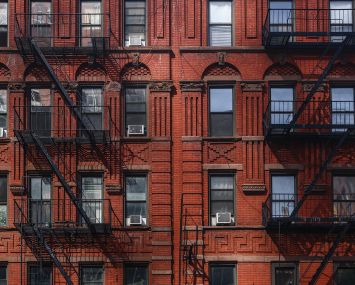Four Real Estate Buying Opportunities (Psst… the Biggie Is In Retail)
By Robert Knakal June 24, 2015 4:18 pm
reprintsAt a recent taping of The Stoler Report, I was on a panel discussing the investment sales market in New York City and Michael Stoler asked us what we thought the best opportunities were in the market today given that many participants feel we are at or near the top of the present cycle.
I mentioned four areas where I saw opportunity. The first was any prime property in the Manhattan submarket. It is clear, even if we are at the top of the cycle, that if prime properties are not overleveraged, they will perform very well over the long run as we have seen the peak of each successive cycle significantly exceed the peak of the previous cycle. Another area where I see opportunity is anywhere in the outer boroughs around major transportation hubs. Affordable and workforce housing is essential for the future of the city and increasing zoning density is really the only way to effectively get there. Pragmatically, the City Planning Commission will increase densities around transportation hubs, which will increase property values there.
The third area in which I think opportunity exists is office buildings in submarkets outside of Manhattan. This is because the gap between office building capitalization rates in Manhattan versus. the outer boroughs is at an irrational 200 to 250 basis points, which is much wider than it should be. With the attractiveness of these submarkets growing, along with the allure of non-traditional offices these days, I believe there is tremendous opportunity to acquire office properties outside of Manhattan and see their values grow dramatically.
The last area where I see tremendous upside is in the retail property sector. I believe that New York is significantly under-retailed and with our population trends moving positively, and projected to continue to grow well into the future, I believe there will be significant upward pressure exerted on retail rents, which will positively impact values.
2014 was a spectacular year for retail properties in New York City. An all-time record of $4.83 billion of retail properties traded hands last year, 176 percent higher than the $1.75 billion that occurred in 2013. This statistic includes both freestanding retail properties along with retail condominiums, which are growing significantly in popularity with investors. Through 1Q15, there has been just under $1 billion of retail property sales, which would bring the annual total to around $4 billion. We expect this total to improve significantly as we move further into the year.
2014 was also a banner year in terms of the number of retail properties sold. Last year, there were 415 retail property sold establishing a cyclical peak in market activity. The 415 properties sold in 2014 represented a 58 percent increase over the 262 which traded hands in 2013. In 1Q15, 101 properties sold, which, if annualized, would come close to the 415 sold last year. We expect this metric to improve as well.
Clearly, the volume of sales in the retail sector has been tremendous and values are skyrocketing as well. In 2014, the average retail property sold in New York City achieved an average price per square foot of $1,191. This was about 50 percent higher than the $801 average attained in 2013. In 1Q15, the average has been just $1,029. However, this statistic is skewed greatly by activity in Manhattan. So far this year, the highest price achieved has been only about $6,000 per square foot. In 2014, there were several retail property sales in Manhattan well over $10,000. In Soho, there were many sales in the $15,000 to $20,000 per square foot range and some Midtown and Upper Eastside sales closed in the $25,000- to $30,000-per-square-foot range.
Another statistic that demonstrates the misleading nature of 2015’s current price per square foot average is an analysis of capitalization rate trends in the retail sector. During the recessionary period from 2009 to 2011, the average retail cap rate in New York City was just slightly under 7 percent and has been falling steadily since. Through 1Q15, the average retail property cap rate has been 4.59 percent. In the Manhattan submarket, the average cap rate has been a remarkable 3.64 percent, a new record for this property type. Historically, sub 4 percent cap rates have been reserved for multifamily assets but the attractiveness of retail properties to market participants is continuing to exert tremendous downward pressure on returns.
Robert Knakal is the chairman of New York Investment Sales for Cushman & Wakefield and has brokered the sale of approximately 1,700 properties in his career having a market value in excess of $12.5 billion.


